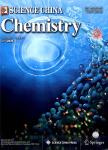In-situ nanoscale insights into the evolution of solid electrolyte interphase shells:revealing interfacial degradation in lithium metal batteries
In-situ nanoscale insights into the evolution of solid electrolyte interphase shells: revealing interfacial degradation in lithium metal batteries作者机构:Key Laboratory of Molecular Nanostructure and NanotechnologyBeijing National Laboratory for Molecular SciencesCAS Research/Education Center for Excellence in Molecular SciencesInstitute of ChemistryChinese Academy of SciencesBeijing 100190China University of the Chinese Academy of SciencesBeijing 100049China
出 版 物:《Science China Chemistry》 (中国科学(化学英文版))
年 卷 期:2021年第64卷第5期
页 面:734-738页
核心收录:
学科分类:081704[工学-应用化学] 0808[工学-电气工程] 08[工学] 0817[工学-化学工程与技术] 0703[理学-化学]
基 金:This work was financially supported by the National Key R&D Program of China(2016YFA0202500) National Natural Science Fund for Excellent Young Scholars(21722508)
主 题:solid electrolyte interphase shell lithium deposition and stripping interfacial degradation lithium metal battery
摘 要:The solid electrolyte interphase(SEI)has caught considerable attention as a pivotal factor affecting lithium(Li)metal battery ***,the understanding of the interfacial evolution and properties of the on-site formed SEI shells on Li deposits during cycling is still at a preliminary ***,we provide a straightforward visualized evidence of SEI shells’evolution during Li deposition/stripping to reveal anode degradation via in-situ atomic force microscopy(AFM).Nucleation and growth of quasi-spherical Li particles are observed on a Cu substrate,followed by Li stripping and collapse of SEI *** the subsequent cycling,new Li deposits tend to nucleate at pristine sites with fresh SEI shells forming on *** previously collapsed SEI shells accumulate to increase interface impedance,eventually leading to capacity *** the electrochemical processes and interfacial degradation at the nanoscale will enrich fundamental comprehension and further guide improvement strategies of Li metal anodes.



